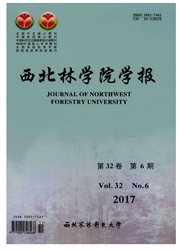

 中文摘要:
中文摘要:
针对传统风景区保护与利用土地适宜性评价中主要采用经验判断和单因素分析等定性方法的缺陷,在GIS支持下,建立基于ArcGIS9.3的蚌埠市黑虎山风景区空间数据库;依据稳定性、独立性、主导性和代表性原则,选取坡度、坡向、高程、自然灾害、林地分布、水域分布、风景名胜、可达性、视域范围、开发现状、人类活动等11个评价因子,并采用AHP法确定各评价因子的权重;然后利用构建的土地适宜性评价模型,在ArcGIS9.3空间分析模块中对评价因子拓扑叠加分析;最后利用自然间断分类法将黑虎山风景区土地适宜性分为适宜开发利用、基本适宜开发利用、限制开发利用、生态恢复和生态保护5个等级,分别占总面积的23.78%、16.65%、18.05%、23.55%、17.98%。以此为依据提出了黑虎山风景区不同等级土地的保护和永续利用措施。
 英文摘要:
英文摘要:
In order to overcome the defects in traditional methods for scenic spot land evaluation,land suitability evaluation model supported by the spatial analysis of topology superposition in ArcGIS9.3 was adopted in this paper for the ecological planning of Heihushan scenic spots,located in Bengbu,Jiangsu Province,China.A geodatabase was established by ArcGIS9.3 based on Quickbird image,1∶10 000 topographic map and other basic data.According to the geodatabase,11 evaluation factors were selected under the principles of stability,independence,dominance,and typicality,including slope,aspect,elevation,etc.The weights of factors used for the evaluation were decided by the method of analytical hierarchy process(AHP).Eventually,with the natural breaks classification method,Heihushan scenic spots were divided into five zones: suitable utilization land,moderately suitable utilization land,restricted utilization land,ecological restoration land,and ecological conservation land,accounting for 23.78%,16.65%,18.05%,23.55%,and 17.98% respectively.The effective strategies based on the assessment results could be used as the reference for scenic spot protection and sustainable development.
 同期刊论文项目
同期刊论文项目
 同项目期刊论文
同项目期刊论文
 Interpretation of forest resources at the Individual tree level at Purple Mountain, Nanjing City, Ch
Interpretation of forest resources at the Individual tree level at Purple Mountain, Nanjing City, Ch 期刊信息
期刊信息
